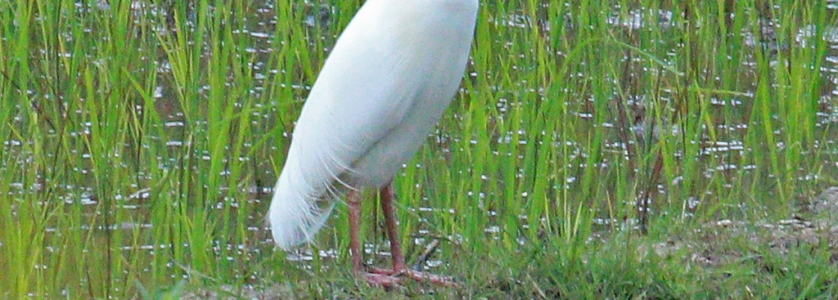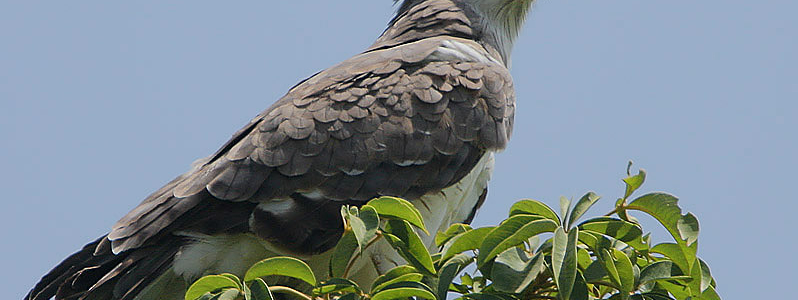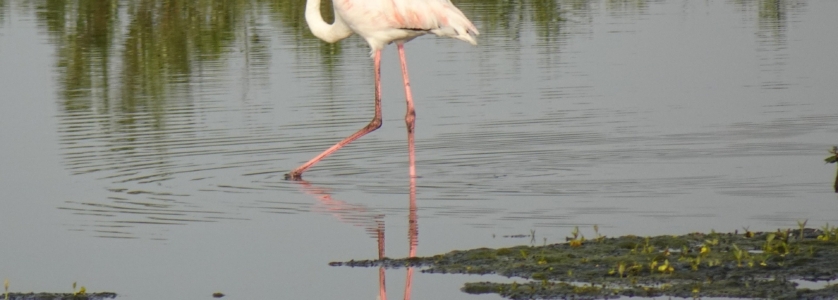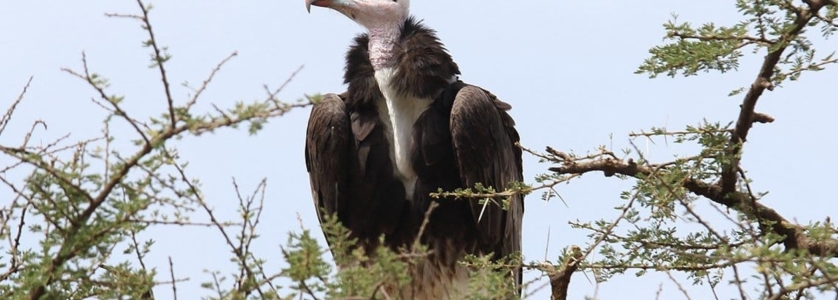
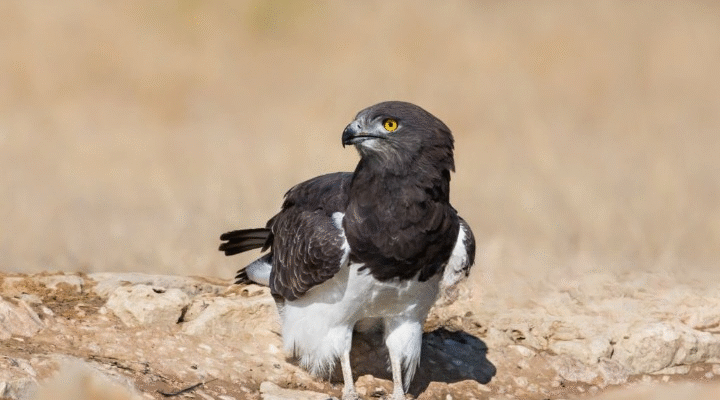
The Black Chested snake Eagle is scientifically known as the Circaetus pectoralis which is an African large bird of prey found within the Accipitridae family. This bird species resembles the other snake Eagles that is the Beaudouin’s and Short Toed Snake Eagles.
It is one of the Uganda bird species spotted during birding in Uganda and other countries in East, South and Central Africa on Africa birding safaris.
This Snake Eagle is found of inhabiting the Savannahs and woodlands along with the desert to open steppes hence avoiding true dense forests and desert. Therefore it lives in areas of 3400 meters above sea level of elevation. The Black Chested Snake Eagle ranges in the Eastern, Southern and Central Africa hence being a highly nomadic bird species in many areas and intra African migrant.
Physcial description of the Black Chested Snake Eagle
Black Chested Snake Eagle is generally a large bird of prey measuring about 63 to 68 centimeters in length. It is characterised with black upperparts in an adult bird species along with an effect that is slight scaled because of pale feather’s edges.
This Snake Eagle species features a wide wingspan measuring about 178 centimeters thereby being a heavy bird species which weighs about 1178 to 2260 grams. It is also characterised with white underparts together with black chest, chin and throat.
The Black Chested Snake Eagle bares white undertail and underwing feathers with black narrow bars across the tail and secondaries. It is featured with a black head and a hooked bill which is blackish in colour having grey cere.
This bird species is characterised with grey bare legs that are long and feet hence having bright yellowed eyes and both male and female Black Chested Snake Eagle have similar sexes but the female is a little bit larger than the male.
Juvenile Snake Eagle species features brown upperparts along with pale feathers’ edges and dark browned flight feathers. It has a paler rufous brown head with a slightly streaked dark browned crown and paler buffy brown underparts.
Behaviour of the Black Chested Snake Eagle
During the hunting period, Black Chested Snake Eagle soars high in the air kiting with bent wings when windy and hunts in open areas. It also hovers while flapping its wings and pursue its prey over a long distance hence being a solitary hunter.
This bird species is generally a silent Snake Eagle species which utters out a melodious whistled kwo kwo kwo kweeoo. While in flight, the Black Chested Snake Eagle hovers and soars high while hunting for its prey. The bird species may gather at roosts of up to 200 birds when out of breeding season.
The Black Chested Snake Eagle mainly feeds on snakes and here it spends most of its time flying insearch for its prey. It performs some hovering and then dives with an upright head. While in air, the wings are always seen in an M-shaped form and prominent breast hence throwing forwards its talons inorder to catch the prey. After grabbing the snake, it carries it in the bill with tail dangling thereby being very conspicuous with a long snake in flight.
This Snake Eagle species occupies a variety of habitats which includes grasslands and thornbush savannas, desert areas, semi arid savanna, miombo woodlands and open acacia hence avoiding forested and mountainous areas. Being mainly a snakes’ predator, the Black Chested Snake Eagle also consumes frogs, birds, small mammals and lizards.
Breeding and Reproduction process of the Black Chested Snake Eagle
During the breeding period which occurs throughout the year, the breeding partners construct a nest together which is a small stick structured nest placed on the top of a low thorn tree or flat topped acacia.
When the reproduction period comes, the female Black Chested Snake Eagle lays only one egg per clutch which is white in colour. Incubation of the laid egg is done by both parents with the female playing the biggest role and the male providing food for her and this lasts for about 52 days.
The young ones develop wings and feathers at about 3 months after hatching hence leaving the nest.
Don’t miss out spotting this bird species on Uganda birding tours and birdwatching in Africa.
More posts for you

Over 50 excellent reviews on Safaribookings.
 >
> 
